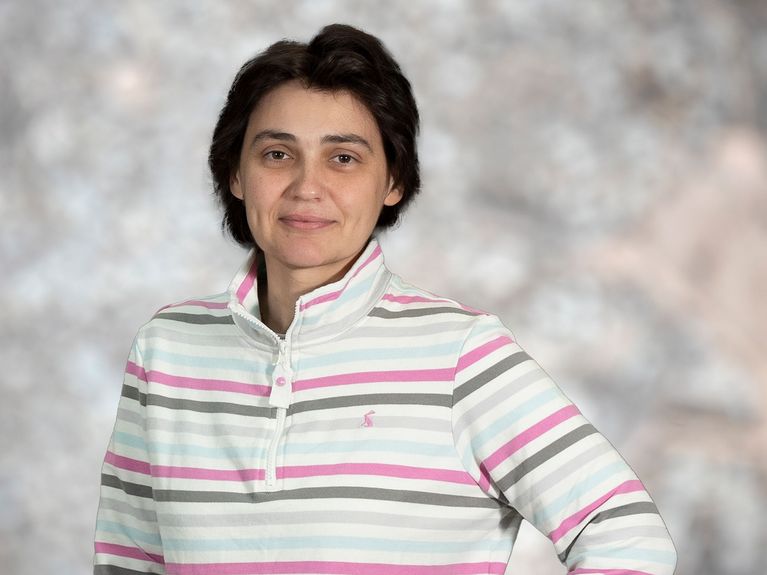Interview
Climate data for the Port of Hamburg

Dr Monica Ionita, climate scientist at the Alfred Wegener Institute Picture: AWI
For eight years, researchers from the Alfred Wegener Institute Helmholtz Center for Polar and Marine Research have supported the Hamburg Port Authority by providing seasonal water level forecasts. Climatologist Monica Ionata explains how it works.
What are you researching?
We basically compare the occurrence of extreme weather events today with those in the past. We use data from climate archives, such as tree rings and ice cores, to do this. Our goal is to discover patterns that we can use to predict the future climate. Our models help us better understand the current weather situation and make forecasts.
What are you observing?
The problem is that what we are observing now, as well as what we have observed over the past ten years, has no real equivalent in the past. That's why we have to adapt our models to current conditions. Everything is happening much faster now, and events are much larger in scale. Droughts are also much longer and develop quickly. For example, we can have an extremely wet winter, as we have had repeatedly in recent years. Then, it becomes very dry in the spring, as we experienced this spring, especially in northern Germany. This transition happens very quickly. We go from very wet periods to really dry ones. During this transition, our systems have to understand that this can happen much faster than in the past.
Does the data from past climate phenomena still help with modeling?
Yes, the data helps us better understand the current weather situation. We work with models that explain physical relationships. It's not just pure statistics. We look for analogies in the past and incorporate them into our models.
What does "physics" mean in this context?
For instance, we know that for every degree of warming, we can expect about seven percent more water vapor in the atmosphere. Therefore, there will be more precipitation overall. Where exactly it will fall is more difficult to predict. Sometimes we can make accurate predictions, and sometimes we cannot. In December 2024, for instance, there were extreme precipitation events and flooding. We knew it was going to rain, but not to that extent. That's the problem now. Nevertheless, as I said, our models are physics-based, so we can use past information to make predictions and understand what's happening now.
There have been periods of drought in the past.
One big difference today is that, in the past, droughts—which we also call cold droughts—were mainly caused by a lack of precipitation in consecutive years. People were more dependent on precipitation because temperatures were lower than they are today. Today, we have precipitation deficits as well, but we also have higher temperatures, which increase evaporation. Consequently, drought conditions today are much more extreme than they were 200 years ago.
As part of your research, you also work with the Hamburg Port Authority. What does that involve?
We provide the authority with monthly and seasonal forecasts of the Elbe's water level. We began this project eight years ago, and it has been extended every year since then. For the past three years, we have had another project focusing mainly on the Rhine that also serves water management purposes. Our goal is to provide the authorities with information on the expected water levels in the river over the next three months.
How exactly does the collaboration work?
Our forecasts for the Hamburg Port Authority are very accurate, especially in the summer months, when they are crucial. For instance, by the end of May, we usually know whether it will be a dry summer. We provide a three-month forecast: Okay, there won't be enough water for large ships to pass through in the summer, so take the appropriate measures. The model's accuracy is extremely high. At the end of May, we predicted that this summer would be extremely dry, and recent checks show that there is not much water left in the Elbe.
But it has rained a lot in recent weeks!
Yes, it's raining, but at the beginning of July, the water level was around 110 centimeters, close to Hmaburg. Now, after so much rain, it's 120 centimeters. It has been too warm, so even when it rains a lot, most of the water evaporates. There is no chance it will actually penetrate the ground and raise the water level. There may be a brief rise in the water level, but it will disappear quickly because there is not much water left in the catchment area.
Readers comments